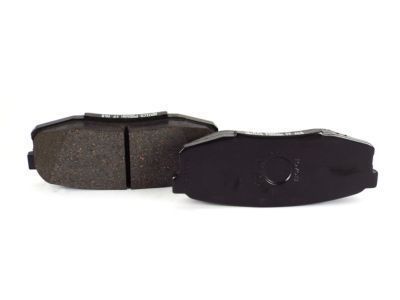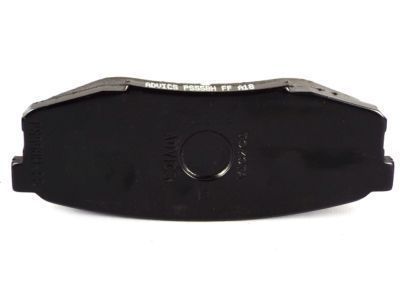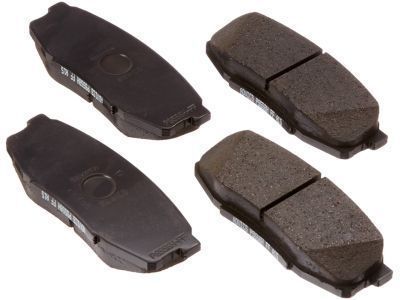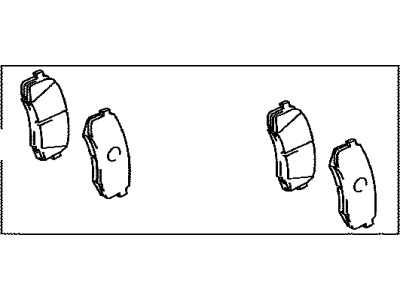This part fits the vehicle you selected:
My Vehicle: 5TFUW5F11CX232874 2012 Toyota Tundra 8 Cyl 5.7L DOHC EFI; SR5; 6-Speed Automatic Transmission; Double Cab; High Efficiency Twin Cam (Flex Fuel); S Type; USK56L-CRTSGA
Change VehicleThe location this part fits:
- Rear
- Production Date: 04/2009-08/2013
- Fitting Vehicle Options: GSK5#, UPK5#, USK5#
Toyota 04466-0C010 Rear Disc Brake Pad Set
2007-2018 Toyota 044660C010
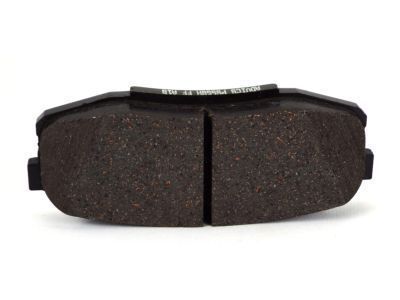
- Part DescriptionPad Kit, Disc Brake, Rear
- MARK ADVICS PS558H
- Part Name Code04466
- PositionRear
- ManufacturerToyota
This part fits the vehicle you selected:
5TFUW5F11CX232874 2012 Toyota Tundra 8 Cyl 5.7L DOHC EFI; SR5; 6-Speed Automatic Transmission; Double Cab; High Efficiency Twin Cam (Flex Fuel); S Type; USK56L-CRTSGA
The location this part fits:
- Rear
- Production Date: 04/2009-08/2013
- Fitting Vehicle Options: GSK5#, UPK5#, USK5#
$53.55 MSRP: $78.00 1
You Save: $24.45 (32%)
Ships in 1-3 Business Days
Product Specifications
| Brand | Genuine Toyota |
| Part Name Code | 04466 |
| Manufacturer Part Number | 04466-0C010 |
| Part Description | Pad Kit, Disc Brake, Rear |
| Other Names | Brake Pads, Rear Pads |
| Item Dimensions | 13.7 x 11.6 x 2.1 inches |
| Item Weight | 3.20 Pounds |
| Position | Rear |
| Condition | New |
| Fitment Type | Direct Replacement |
| Manufacturer | Toyota |
| SKU | 04466-0C010 |
| Warranty | This genuine Toyota part is guaranteed by Toyota's factory warranty. |
| Shipping & Return | Shipping Policy Return Policy |
Warning: California’s Proposition 65
Customer Questions & Answers
- Q:Can you verify fitment for this part? Posted by ToyotaPartsDeal Specialist
- A:You can Select Your Vehicle to check if 04466-0C010 fits your vehicle.Posted by ToyotaPartsDeal Specialist
- Q:How to replace brake pads on a Toyota Sequoia and Toyota Tundra? Posted by Customer
- A:Loosen the wheel lug nuts, raise the vehicle and support it securely on jackstands. Block the wheels at the opposite end. Remove the wheels.Remove about two-thirds of the fluid from the master cylinder reservoir and discard it; as the pistons are pushed in to make room for the new pads, the fluid will be forced back into the reservoir. Position a drain pan under the brake assembly and clean the caliper and surrounding area with brake system cleaner (Wash the disc and caliper with brake system cleaner to remove the brake dust; DO NOT blow off the brake dust with compressed air).While the pads are removed, inspect the caliper for brake fluid leaks and ruptures in the piston boot(s). Replace the caliper if it's damaged or leaking. Also inspect the brake disc carefully. If machining is necessary, follow the information in that Section to remove the disc.To replace the front brake pads, (Squeeze the pads towards the caliper frame to free up the pads and depress the pistons into their bores. Detach the pin retaining clip. Pull out the pad retaining pins. Remove the anti-rattle spring. Remove the inner brake pad and push the inner pistons back into their bores to provide room for the new pad. Apply anti-squeal compound to the back of the new pads, then stick the anti-squeal shims to them. Install the new inner pad, then replace the outer pad the same way. Reinstall the pad retaining pins, anti-rattle spring, and the pin retaining clip, then proceed to Step 7). Be sure to stay in order. Work on one brake assembly at a time so you'll have something to refer to if you get in trouble.Using a C-clamp, depress the caliper piston into its bore to make room for the new, thicker pads.To replace the rear brake pads, (Always wash the brakes with brake cleaner before disassembling anything. Using an opened wrench, loosen the lower bolt then remove the mounting bolt or "guide pin". Rotate the caliper up until the upper mounting bolt can be slid out of the bracket. Remove the inner pad and anti-squeal shim. Remove the outer pad and anti-squeal shim. Remove the upper and lower support plates; Inspect them for damage and replace if necessary (if they're weak or distorted, they should be replaced). Install the anti-squeal shims to the brake pads. Install the pads; make sure the ears on the pads are properly engaged with the pad support plates. Install the new inner pad, then the outer pad the same way, and install the caliper over them. Before Installing the caliper mounting bolts, clean and check them for corrosion and damage. If significantly corroded or damaged, replace them. Lubricate the sliding surfaces of the bolts with high-temperature brake grease, install and tighten them, then proceed to Step 7). Be sure to stay in order. Work on one brake assembly at a time so you'll have something to refer to if you get in trouble.Install the brake pads on the opposite wheel, then install the wheels and lower the vehicle. Tighten the lug nuts.Add brake fluid to the reservoir until it's full. Pump the brakes several times to seat the pads against the disc, then check the fluid level again.Check the operation of the brakes before driving the vehicle in traffic. Try to avoid heavy brake applications until the brakes have been applied lightly several times to seat the pads.Posted by ToyotaPartsDeal Specialist
If you have any questions about this product, please don't hesitate to ask us. We will be happy to help you!
Why choose Toyota Parts Deal
- Dedicated Service
Your complete satisfaction is our #1 goal
- Lowest Prices
Best deals on genuine OE parts from dealerships
- Fast Delivery
Orders are processed and delivered promptly


